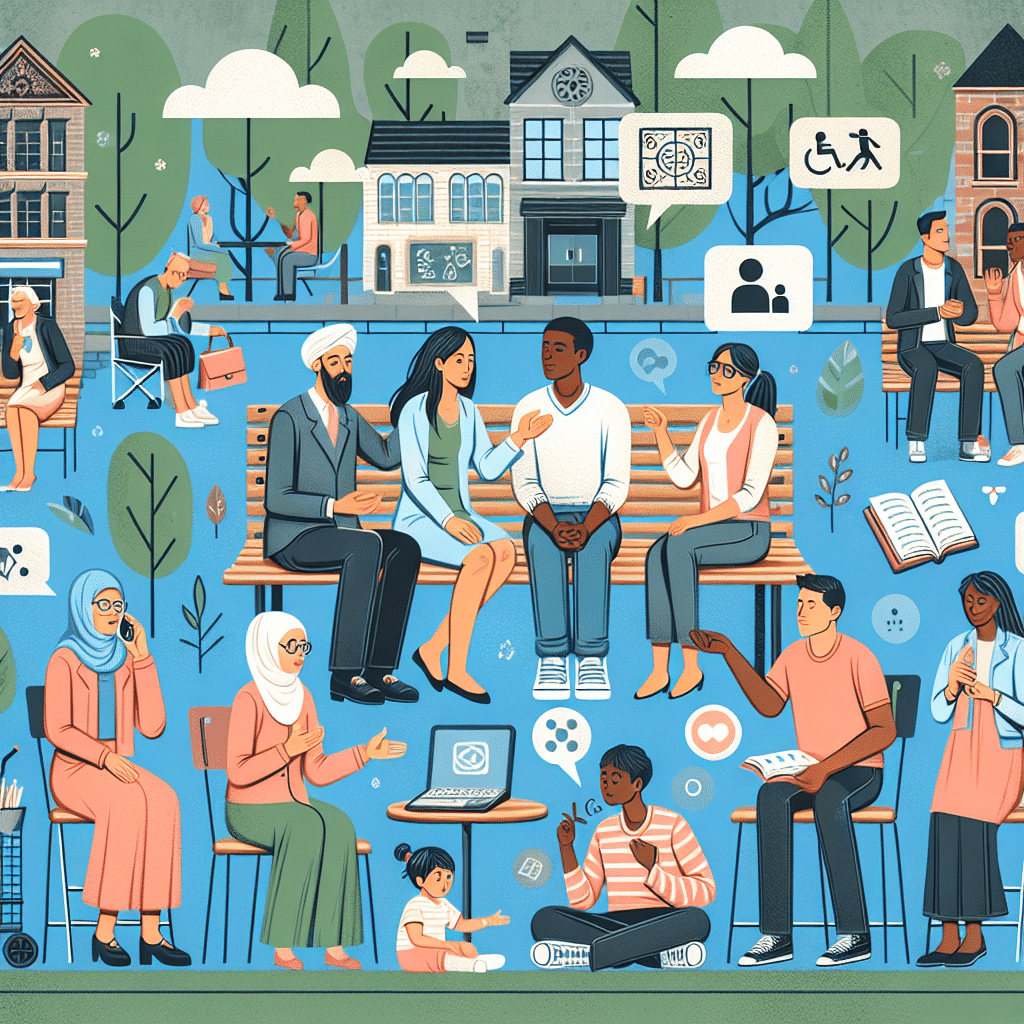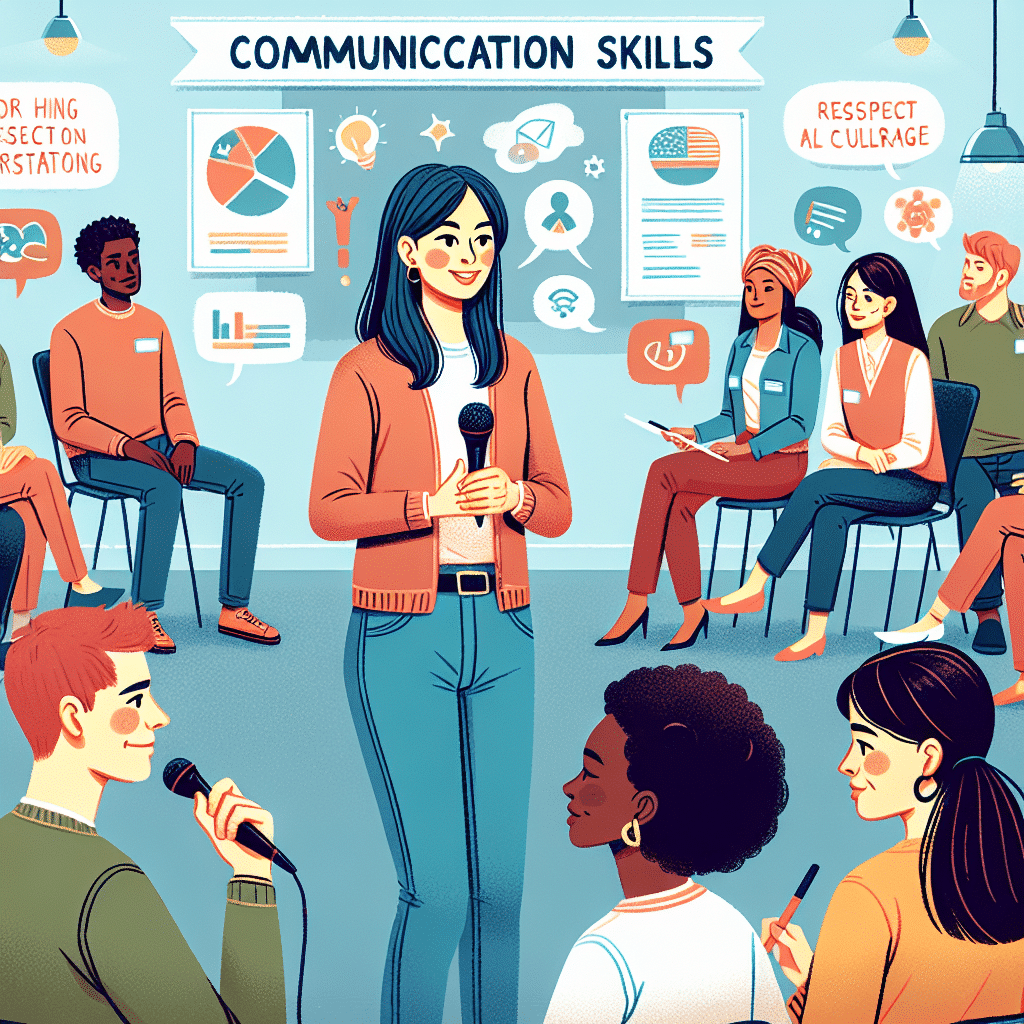
Community engagement plays a vital role in enhancing communication skills among individuals. Effective communication in community engagement is crucial for fostering collaboration, sharing ideas, and building relationships. It enables individuals to understand and be understood, leading to better problem-solving, decision-making, and consensus building within the community.
Effective communication in community engagement has numerous benefits. Firstly, it promotes transparency and trust. When community members are actively engaged in communication, they feel valued and respected. This fosters trust and open dialogue between community members and organizations, leading to stronger relationships and increased participation.
Secondly, effective communication in community engagement ensures that information is delivered clearly and comprehensively. This reduces misunderstandings and promotes clarity in conveying goals, projects, and initiatives. When individuals have a clear understanding of what is being communicated, they are more likely to be actively involved and contribute meaningfully.
Thirdly, community engagement in communication skills encourages active listening. Active listening involves focusing on the speaker, understanding their perspective, and providing feedback. By actively listening, community members can gain insights, show empathy, and strengthen relationships. It also helps to identify common goals, address concerns, and find suitable solutions.
To improve communication skills in community engagement, several strategies can be employed. Firstly, using various communication channels such as face-to-face meetings, social media platforms, and online forums can help reach a diverse range of community members. Secondly, providing training and workshops on effective communication can enhance individuals’ skills and understanding of different communication styles.
Additionally, promoting an inclusive and respectful environment is essential for effective communication in community engagement. Ensuring that everyone has an opportunity to speak, being open to diverse opinions, and valuing different perspectives can foster a collaborative and inclusive atmosphere.
However, there are barriers that can hinder effective communication in community engagement. These barriers include language barriers, cultural differences, and limited access to communication technology. Overcoming these barriers requires providing translation services, cultural competency training, and ensuring equitable access to communication tools and resources.
In conclusion, community engagement in communication skills is vital for building strong, collaborative, and resilient communities. It allows for effective information sharing, fosters trust and transparency, and encourages active listening. By employing various strategies and overcoming barriers, communities can enhance their communication skills and promote meaningful engagement for a better future.
Benefits of Effective Communication in Community Engagement
Effective communication plays a crucial role in community engagement, leading to numerous benefits for all stakeholders involved. When individuals and organizations prioritize clear and open communication, it fosters a sense of trust, understanding, and collaboration. Here are some key benefits of effective communication in community engagement:
1. Building Strong Relationships
Effective communication helps build strong relationships within the community. When community members can openly express their thoughts, needs, and concerns, it creates opportunities for meaningful dialogue and connection. This enables individuals and organizations to establish trust, foster a sense of belonging, and build long-lasting relationships with the community.
2. Enhancing Problem-solving Abilities
Effective communication enhances problem-solving abilities within the community. Through clear and concise communication, community members can better articulate challenges and work together to find collective solutions. This allows for a more efficient and effective problem-solving process, enabling the community to tackle complex issues and achieve their goals.
3. Encouraging Collaboration and Cooperation
Effective communication fosters collaboration and cooperation within the community. By promoting open dialogue and active listening, community members and organizations can work together towards shared objectives. Improved communication helps bridge gaps, break down barriers, and encourage diverse perspectives, leading to innovative solutions and greater overall community success.
4. Empowering Community Participation
Effective communication empowers community members to actively participate in decision-making processes. When communication channels are open and individuals feel their opinions are valued, they are more likely to engage and contribute to community initiatives. This promotes a sense of ownership, empowerment, and inclusivity, as everyone has a voice in shaping their community’s future.
5. Increasing Transparency and Accountability
Effective communication increases transparency and accountability within the community. When stakeholders communicate openly and honestly, it builds trust and credibility. This fosters a sense of transparency, ensuring that decisions and actions are well-informed, understood, and accountable to all members of the community.
6. Facilitating Understanding and Cultural Exchange
Effective communication facilitates understanding and cultural exchange within the community. By actively listening and engaging in dialogue, individuals can learn about different perspectives, customs, and traditions. This promotes empathy, tolerance, and cultural appreciation, creating a stronger and more inclusive community.
In conclusion, effective communication is essential for successful community engagement. By prioritizing clear and open communication, communities can build strong relationships, enhance problem-solving abilities, encourage collaboration and cooperation, empower community participation, increase transparency and accountability, and facilitate understanding and cultural exchange. These benefits contribute to the overall success and well-being of the community, fostering a sense of unity, resilience, and shared vision.
Strategies for Improving Communication Skills in Community Engagement
In order to effectively engage with a community, it is essential to have strong communication skills. These skills enable individuals to connect, engage, and collaborate with community members, creating a sense of unity and fostering mutual understanding. Here are some strategies for improving communication skills in community engagement:
1. Active Listening
Active listening is a fundamental communication skill that involves fully concentrating, understanding, responding, and retaining information from a conversation. In community engagement, active listening is crucial as it helps individuals truly understand the concerns, needs, and aspirations of community members. This skill allows for the development of empathy and trust, which are key in establishing meaningful relationships within a community.
2. Effective Verbal Communication
Effective verbal communication involves using clear language, proper tone, and appropriate body language to convey messages. When engaging with a community, it is important to communicate clearly and concisely, avoiding jargon or technical terms that may be unfamiliar to community members. Using simple and straightforward language ensures that messages are easily understood and relatable, promoting effective communication and engagement.
3. Non-Verbal Communication
In addition to verbal communication, non-verbal cues such as facial expressions, gestures, and body language play a significant role in community engagement. These cues can convey emotions, attitudes, and intentions, enhancing the understanding and connection between communicators. Being aware and mindful of one’s non-verbal cues and responding appropriately to those of others can greatly facilitate effective communication in community engagement.
4. Empathy and Cultural Sensitivity
Empathy is the ability to understand and share the feelings and perspectives of others. In community engagement, it is essential to demonstrate empathy towards community members, acknowledging their struggles and concerns. This involves listening with an open mind, being non-judgmental, and considering different cultural backgrounds, experiences, and perspectives. Building cultural sensitivity helps to foster inclusivity and collaboration, allowing for effective communication and engagement within diverse communities.
5. Feedback and Reflection
Continuous improvement in communication skills is vital for community engagement. Seeking feedback from community members, colleagues, or mentors can provide valuable insights on areas for improvement. Reflection on past interactions and experiences can also help identify strengths and weaknesses, allowing individuals to refine their communication skills. Regular self-assessment and feedback solicitation contribute to the development of more effective and impactful communication strategies within the context of community engagement.
By implementing these strategies, individuals can enhance their communication skills and effectively engage with communities. Strong communication skills lead to greater collaboration, trust, and understanding, enabling successful community engagement that addresses the needs and aspirations of all members.

The Role of Active Listening in Community Engagement
Active listening is a crucial skill that plays a significant role in community engagement. It involves fully focusing on, understanding, and responding to the individuals or groups involved in a community. By practicing active listening, community members and leaders can enhance their communication skills and foster meaningful connections with others.
Benefits of Active Listening
Active listening allows community members to truly understand the needs, concerns, and perspectives of others. This creates an environment of respect, where individuals feel heard, valued, and included. When people feel acknowledged and understood, they are more likely to engage in open and honest conversations, which can lead to effective problem-solving and collaboration within the community.
Additionally, active listening fosters trust among community members. By giving undivided attention and demonstrating genuine interest, community leaders can build strong relationships and establish themselves as reliable and empathetic individuals. Trust is vital in community engagement, as it encourages open communication and promotes community members’ willingness to share their thoughts, ideas, and concerns.
Strategies for Practicing Active Listening
There are several strategies that individuals can utilize to improve their active listening skills in community engagement:
- Pay full attention: Give your undivided attention to the person speaking, maintaining eye contact, and avoiding distractions.
- Show empathy: Demonstrate understanding and empathy by acknowledging and validating the emotions and experiences shared by others.
- Ask clarifying questions: Seek clarification to ensure a complete understanding of what the speaker is saying. This will prevent misunderstandings and show your genuine interest in their message.
- Practice patience: Allow the speaker to express themselves fully without interrupting or rushing them.
- Provide feedback: Offer feedback and summarize what you have understood from the speaker’s message. This not only confirms your understanding but also shows the speaker that you are actively engaged in the conversation.
Overcoming Barriers to Active Listening
While active listening is an essential skill, it is not without its challenges. Various barriers can hinder effective active listening, such as distractions, preconceived notions, and personal biases. However, being aware of these barriers is the first step in overcoming them.
To overcome these barriers, individuals should practice self-awareness and actively work towards minimizing distractions, suspending judgment, and seeking to understand differing perspectives. By consciously challenging their biases and focusing on the speaker’s message, individuals can overcome these barriers and engage in effective active listening.
In conclusion, active listening plays a pivotal role in community engagement. By practicing active listening, individuals can create an environment of trust, inclusion, and collaboration within their communities. Through this attentive and empathetic communication approach, community members can strengthen relationships, address concerns effectively, and drive positive change for the betterment of their community.
The Role of Active Listening in Community Engagement
Active listening plays a crucial role in community engagement by fostering open and effective communication between individuals and groups. It involves not just hearing what others are saying, but also actively understanding, interpreting, and responding to their messages. This skill is essential for building trust, resolving conflicts, and creating a sense of belonging and inclusivity within a community.
1. Building Trust
Active listening is a powerful tool for building trust within a community. When individuals feel that their voices are heard and respected, they are more likely to feel valued and connected to the community. This can lead to increased participation and collaboration, as well as a stronger sense of unity and shared goals.
2. Resolving Conflicts
Effective communication through active listening can help in resolving conflicts within a community. By listening attentively to all parties involved and seeking to understand their perspectives, individuals can work towards finding common ground and mutually beneficial solutions. This approach promotes empathy, understanding, and collaboration, which are essential for addressing and resolving differences in a constructive manner.
3. Creating Belonging and Inclusivity
Active listening is instrumental in creating a sense of belonging and inclusivity within a community. By actively engaging with individuals from diverse backgrounds and perspectives, community members can gain a deeper understanding of their experiences and needs. This understanding can help in creating inclusive policies, programs, and initiatives that cater to the diverse needs of the community, ensuring that everyone feels valued and included.
Furthermore, active listening allows community members to express their ideas, concerns, and suggestions, which empowers them to actively shape the community’s development. This sense of ownership and involvement fosters a stronger sense of belonging and encourages individuals to contribute their skills, resources, and expertise towards the collective growth of the community.
Overall, active listening is an essential skill for effective community engagement in communication. It promotes trust, helps in conflict resolution, and encourages a sense of belonging and inclusivity. By actively listening to others and valuing their perspectives, individuals can create a more harmonious and collaborative community, where everyone’s voice is heard and respected.

Summary
Effective communication is crucial for successful community engagement as it helps build relationships, foster understanding, and empower individuals to participate in decision-making processes. Improved communication skills in community engagement lead to numerous benefits, such as increased trust, collaboration, and the ability to address issues effectively. Strategies for enhancing communication skills include active listening, clear and concise messaging, adapting to diverse communication styles, and using appropriate channels for communication. Additionally, overcoming barriers to effective communication, such as language barriers, cultural differences, and power dynamics, is essential for meaningful community engagement. By prioritizing community engagement and continuously improving communication skills, organizations can build stronger connections and achieve impactful outcomes.






